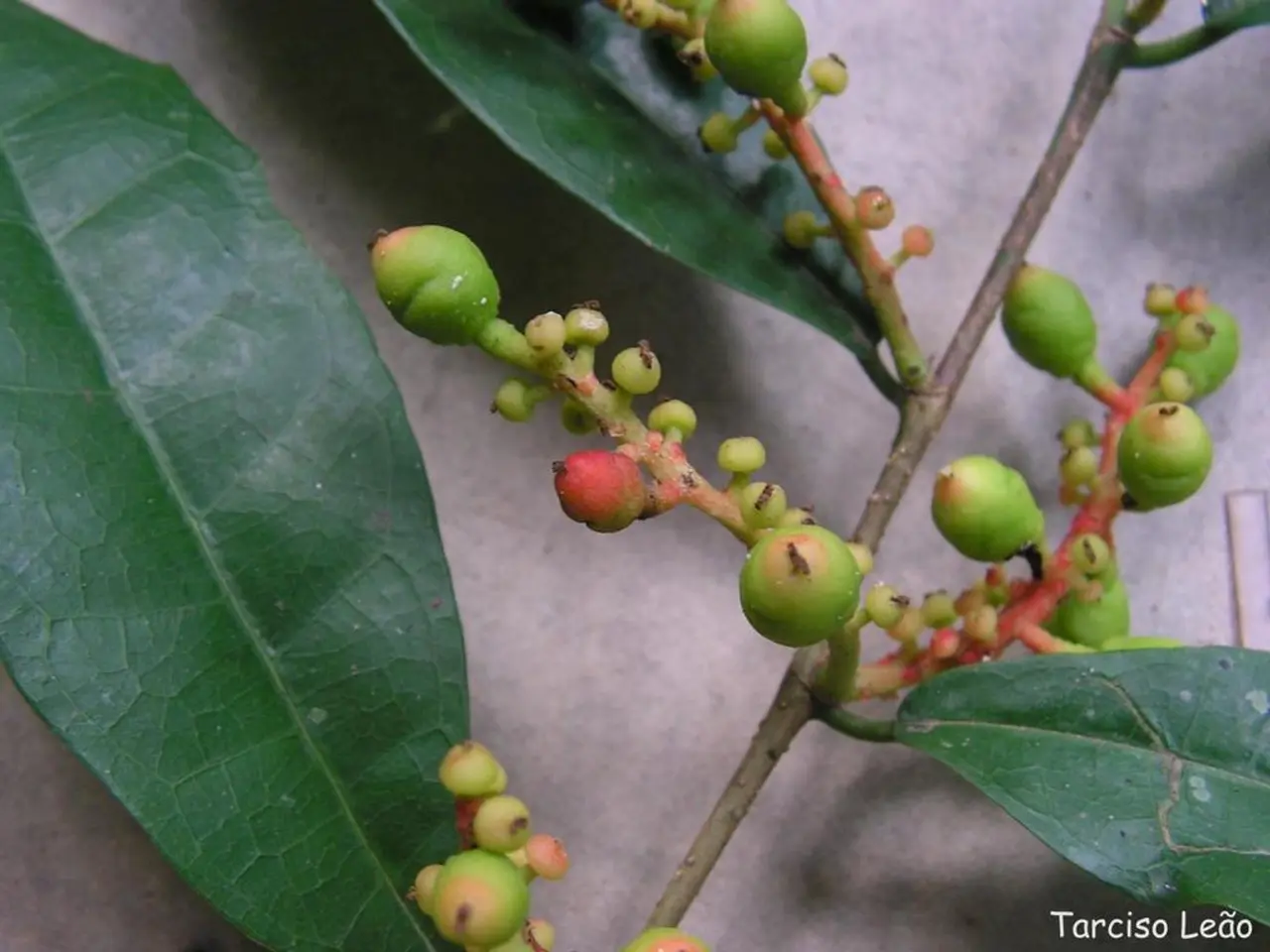Training and Pruning a Fig Tree: A Guide
In the heart of the UK, fig trees can thrive against a sunny wall, providing a delightful crop of delicious fruits for garden enthusiasts. To ensure a bountiful harvest, it's essential to understand the art of pruning.
Pruning fig trees involves two key moments: a more thorough pruning in late winter when the tree is dormant, and a lighter shaping trim in the summer. It's crucial to avoid pruning in spring as fig trees can bleed sap, which weakens them.
Winter Pruning (Late Winter, Dormant Season)
During winter pruning, focus on removing dead, weak, or damaged branches. Cut back the fig tree to maintain a good shape and encourage healthy, fruitful growth. For both fan-trained and bush-trained figs, this dormant period is crucial for establishing a strong framework.
Summer Pruning (Light Trim)
Summer pruning is a lighter process, aiming to tidy up the shape and control excessive growth. This helps keep the tree manageable and encourages better airflow and sunlight penetration, which are beneficial for fruit production.
Fan-Trained Fig Trees
Fan-trained figs are typically grown against a wall or trellis. In late winter, prune back crowded or crossing branches to maintain a flat, fan-like shape. Train the main branches horizontally along support wires or a wall, trimming side shoots to keep the shape neat.
Bush-Trained Fig Trees
For bush-trained figs, prune in late winter to remove dead or weak stems and thin out the center to prevent overcrowding. Cut branches back to strong outward-facing buds to encourage a compact and open canopy. Summer pruning focuses on light shaping and removing any overly vigorous new shoots.
Additional Tips
- Protect fig trees from extreme cold by wrapping branches or moving container trees indoors during harsh winters.
- Apply mulch after pruning in spring to encourage new growth.
Fig trees in the UK produce two crops: the first in late summer and the second in late spring. To get a good crop, avoid cutting too many fruiting branches off during pruning. When pruning in early summer, shorten all sideshoots to five leaves from the base.
Remember, pruning is an art that requires patience and practice. By following these guidelines, you'll be well on your way to enjoying a bountiful harvest of delicious homegrown figs. Happy pruning!
[1] RHS - Pruning Figs: https://www.rhs.org.uk/advice/profile?pid=452 [2] Gardening Know How - How to Prune Fig Trees: https://www.gardeningknowhow.com/edible/fruits/fig/how-to-prune-fig-trees.htm [3] HGTV - How to Prune a Fig Tree: https://www.hgtv.com/outdoors/how-to-prune-a-fig-tree-20003201
- For those interested in home-and-garden pursuits, pruning fig trees can provide an engaging lifestyle activity, as mastering the art ensures a bountiful harvest.
- To further enhance a home-and-garden setup, one could consider incorporating a fig tree in the landscape design, taking advantage of the delightful crops provided and the aesthetic appeal of the tree's growth.




